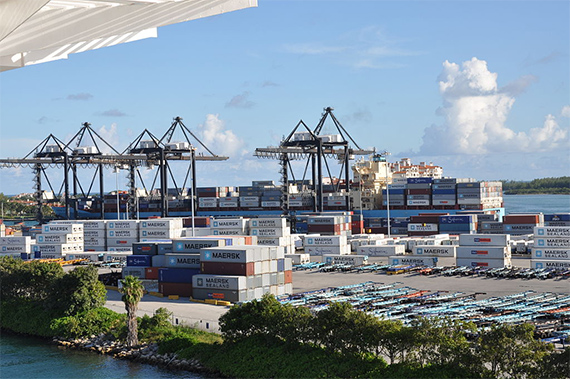Trending
Key SoFla industries affecting CRE face workforce challenges

A panel of leaders in aviation, logistics and health care said these key industries are powerful forces in South Florida’s commercial real estate market, but face some workforce challenges.
Industrial property development in South Florida “is only going to grow,” said panelist Craig Mygatt, CEO of SeaLand, a Miramar-based containerized shipping company owned by Maersk Line.
“It’s going to start pushing up north” into Broward County and Palm Beach County as industrial space availability in Medley and Hialeah gets “really squeezed,” Mygatt said Thursday, speaking as part of a panel discussion at an event at Nova Southeastern University in Fort Lauderdale, organized by the South Florida chapter of NIAOP.
Mygatt said the opening of a widened Panama Canal in 2016 will steer bigger freighters and more ocean freight to Miami because a dredging project already has deepened the water at PortMiami and a new truck tunnel to the port has opened.
He said no other port city in the Southeast has made as much progress as Miami in preparing for the widening of the Panama Canal: “The other states are not there,” so Miami has “a head-start of three to four years, maybe longer.”
The prospects for the aviation industry in South Florida are “absolutely fantastic,” said another panelist, Michael King, CEO of AeroTurbine, a seller and lessor of jet engines and other aircraft components.
AeroTurbine decided in 2012 to relocate from Doral to Miramar. The company occupies about 265,000 square feet at the Miramar Centre Business Park, which serves as its headquarters. King said AeroTurbine didn’t move far because “the technical labor force in South Florida was unmatched.” The company has 650 employees and $600 million of annual sales.
But he also said many of the experienced professionals in his industry are nearing retirement: “We have an aging work force in aviation, especially in South Florida.”
King said AeroTurbine nearly decided in 2012 to relocate to Texas instead of Broward County. The company had opened a facility in Dallas in 2006 because it couldn’t attract young professionals to South Florida due to high home prices. In 2006, he said, comparable homes sold for $150,000 in Dallas and $450,000 in South Florida.
“We’re starting to creep into that [price] range again,” so “today we’re having a hard time recruiting millennials to South Florida,” King said. “We work with almost every local college … trying to get them excited about what we do.”
The market for health care in South Florida “is going to continue to grow because more people are going to move here” and life expectancy is increasing, among other reasons, said Nabil El Sanidi, president and CEO of the not-for-profit Broward Health hospital system.
Changes in the dynamic health care industry are rippling through the commercial real estate market. For example, 84 urgent care centers operate in Broward County, and the number is likely to increase, El Sanidi said. In many cases, primary care physicians are converting their locations to urgent care centers. He also said “medical malls” are starting to pop up with a mix of ambulatory surgery centers and diagnostic facilities.
Hospital occupancy rates in Florida average just 48 percent, he said, so many hospital leaders are considering new uses for their facilities. In the Broward Health system, “we’re thinking about repurposing physical plant,” perhaps to serve as long-term care facilities for the elderly, El Sanidi said. By some estimates, “children born today will live to be 120.”
He said Broward Health also is exploring telemedicine initiatives: “I’m hoping to go more from brick-and-mortar to electronic access to health care.”
El Sanidi also said many medical professionals have retired or stopped practicing medicine for other reasons: “The physician work force and the nursing work force are shrinking.”
But he said warmer relations between the United States and Cuba eventually could bring more Cuban doctors to South Florida to serve as family practitioners, an occupation that debt-burdened graduates of U.S. medical schools tend to forego in favor of practicing a medical specialty, which is more lucrative.
By contrast, “the doctors in Cuba come out [of medical school] with zero debt,” El Sanidi said, and the island nation is “in danger of having a brain drain.”




